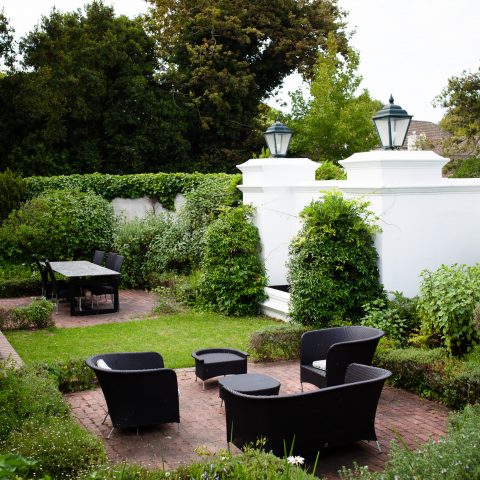Information for Families
Watching a loved one destroy themselves through an addiction is an incredibly lonely and painful experience.
If you are reading this page, you may have already walked quite a distance down this road. With the best intentions in the world, family members usually cope with the fear and chaos of addiction in ways that sustain and compound the problem over a period of time. Secrecy, denial and enabling dynamics are the norm. Help is generally only sought once a breaking point has been reached.
You Don't Have to Suffer Alone...
Help is here where you need it, in a safe space.
How to do an intervention
If a loved one is suffering from an addiction and you judge that they might be responsive to an appeal from family members and close friends to address their problem, an intervention might be a good course of action.
By “intervention” we mean a deliberate, planned discussion initiated by those closest to the addicted person with the intention of encouraging him or her to recognise the problem and take action.
The immediate objective of an intervention is to induce the addicted person to see clearly the impact of the addiction on themselves and others, without provoking defensiveness on the part of the addicted person or allowing the conversation to escalate into a conflict.
Do's And Don'ts
- Ideally the intervention should involve a small group of people that are close to and care about the addicted person.
- It is often helpful to write letters in advance, detailing the impact that the addiction has had on the writer. These can be read to the addicted person on the day.
- You should educate yourself beforehand on relevant aspects such as the nature of the particular addiction, detoxification and treatment programmes – particularly those which suit the personality and needs of the addicted person.
- The participants should plan in advance precisely how the conversation will unfold and should rehearse beforehand.
- Each participant should be willing to offer concrete help to the addicted person in some or other way, within their respective means – e.g. attending family therapy sessions, financial support, care of children while the addicted person is in treatment.
- The participants should be prepared to implement and act upon boundaries if the addicted person is not receptive to the request for intervention. Relationships will need to change. Everyone present must commit to cease enabling and codependent behaviour and be clear that there will be consequences for the addicted person if they refuse help.
- The tone of the discussion should not be one of blame.
- The discussion should not occur spontaneously when the addicted person is drunk or high.
- The participants should not be overly prescriptive or authoritarian in the solutions presented.
- Do not despair if the intervention ends badly. A seed has been planted.
Signs of an addiction
Addiction is an insidious illness. It usually develops gradually over time, making it easy for the severity of the problem to escape the notice of immediate family members. On top of this, the natural inclination for close family is to deny and diminish the problem in order to retain some sense of normality.
If you suspect that a family member may be addicted to alcohol or substances, but you are unsure of the severity of the problem, consider whether any of the following apply to the person:

- An inability to stop using. The individual has made at least one serious but unsuccessful attempt to give up the substance or behaviour.
- Use and abuse of substances continue despite health problems. The individual continues regularly taking the substance, even though they have developed related illnesses.
- Dealing with problems. The substance or behaviour is resorted to in order to (or as an alternative to) dealing with problems.
- Obsession. The individual has become obsessed with the substance or behaviour, spending more and more time and energy finding ways of getting access to it.
- Taking risks. The individual takes risks to obtain the substance or engage in the behaviour.
- Taking a large initial dose. This is common with alcoholics. The individual may rapidly consume large quantities of alcohol in order to feel its effects as soon as possible.
- Sacrifices. The individual is willing to give up activities that they used to enjoy in order to carry on taking or having access to the substance.
- Maintaining a good supply. The individual will ensure that they have a good supply of the substance of choice even if they cannot afford it or are put to serious inconvenience.
- Secrecy and solitude. The individual uses the substance alone or in secret.
- Disregard for safety. The individual consumes the substance in amounts which are unsafe (particularly in the case of alcohol and heroin).
- Maintaining stashes. The individual maintains small hidden stashes of the substance in unlikely places (such as the car or the office).
- Increasing tolerance. The individual needs to take more and more of the substance to achieve the same effect.


- Withdrawal. The individual experiences physical discomfort when their ingested levels of the substance drop below a certain level. Depending on the substance they may experience symptoms such as cravings, constipation, diarrhea, trembling, seizures, sweats, insomnia and uncharacteristic behaviours such as violence.
- Appetite changes. Some substances alter a person’s appetite. Marijuana consumption, for example, might greatly increase their appetite while cocaine may reduce it.
- Sleeplessness. While insomnia is a common symptom of withdrawal, the use of illicit stimulants such as speed or ecstacy might also result in a disrupted sleep cycle.
- A change in appearance. A person may begin to appear more disheveled, tired, and haggard, as using the substance or carrying out the addictive behavior replaces key parts of the day, including washing clothes and attending to personal hygiene.
A person might experience a few of these symptoms or many of them. Substance use disorders manifest differently in different individuals. In general, the greater the number of symptoms displayed, the greater is the severity of the situation.
Most of the above symptoms apply equally (with the necessary changes) to process disorders (i.e. an addiction to a behaviour such as gambling or shopping).
Helpful information
It is a common misconception that curing an addiction simply means abstinence from the substance or behaviour for a long enough period that it is eliminated from the addicted person’s system. This assumption fundamentally misunderstands the nature of addiction and the neurological processes that keep it alive. As an addiction develops, new and distinct neural pathways are formed in the addicted person’s brain, establishing powerful linkages between the pleasure and relief provided by the substance or behaviour and the routines and triggers of everyday life. This process might be compared to the formation of a well-trodden hiking trail. The more we use the path, the faster, easier, and more familiar it becomes. As we travel it more and more, it becomes wider, smoother, and easier to use. It becomes a preferred route. The same is true of neural pathways. Over time, the brain forms familiar neural pathways, and these become habitual routes. Recovery from addiction is about laying new paths and equipping the addicted person with sufficient coping mechanisms and motivation to tread them for a long enough period that they become the preferred route.
When treating addictions to opioids (prescription pain relievers or drugs like heroin or fentanyl), medication should be the first line of treatment, followed by some form of behavioural therapy or counseling. Medications are also available to help treat addiction to alcohol and nicotine. Medications are also used to help people detoxify from drugs, although detoxification is not the same as treatment and is not sufficient to help a person recover. Detoxification alone without subsequent behavioural therapy or counseling generally leads to resumption of drug use.
If the addiction is acknowledged and decisive action taken, there is good reason to be optimistic about the future. The last two decades have seen great strides in the development of effective evidence-based treatment methods and research shows that most people who consciously pursue recovery do ultimately succeed. A substance use disorder is considered “a good prognosis disorder”.
Expect recovery but be prepared for relapse. Although some people achieve recovery on their first attempt, for others it requires multiple attempts over multiple years. Family members should also maintain realistic expectations in their interactions with the addicted person. Your loved one is going to lie to you, and you will want to believe them. They might actually believe themselves. But what they are doing is protecting their illness, because the addictive behaviour or substance has come to seem as vital to them as air. This isn’t to say that you should excuse lying, only that you should understand where it’s coming from so you can take it a little less personally and avoid getting sidetracked by pain and resentment. Instead, keep the lines of communication open, but set clear boundaries that protect you and them, and that encourage a turn toward treatment.
It is not unusual for the immediate family members of a person in active addiction to feel guilt or responsibility for the way that the situation has developed. This is not productive, and it is almost certainly not a true reflection of reality. No matter what you did, how you parented or whether you argued, you did not wish this life for your loved one and you did not cause the condition. Whatever the circumstances were that led your loved to start using drugs or alcohol, you need to know that addiction is a complicated condition influenced by many factors, including genetics. It is more than just an emotional or psychological phenomenon. The structural changes that occur in the addicted brain exert an extremely powerful influence on that person’s behaviour – crowding out reason, common sense and even love.
A vital first step in moving towards a permanent solution for your loved one and your family is shining a light on the problem.
Alcoholics, Narcotics Anonymous, Sex Addicts Anonymous and Gamblers Anonymous are well-established non-profit organisations with a robust global network of support for family members of people suffering from addiction. If your family member is willing to undergo an assessment, Anker Huis House offers this service for free.
